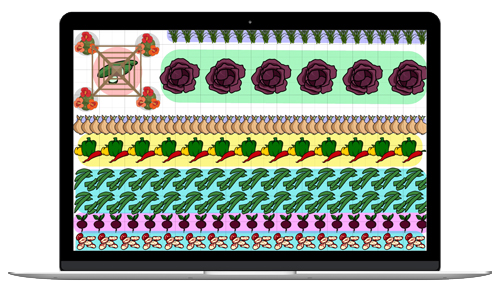
Planting, Growing, and Harvesting Rhubarb
The Almanac Garden Planner - Use It Free for 7 Days!
Plan your 2025 garden with our award-winning Garden Planner.
These common varieties have attractive red stalks and excellent growers:
- ‘Canada Red’
- ‘Crimson Red’
- ‘MacDonald’
- ‘Valentine’
In addition to the previous four, there is a reliable, green-stalked cultivar named:
- ‘Victoria’
Cooking Notes
Check out our list of best rhubarb recipes to put your fresh rhubarb to good use! Plus, learn how to make a rhubarb tonic.
ADVERTISEMENT
I am very new to gardening and planted a rhubarb crown in March. It seems to be flourishing, there are 7 stalks growing from the centre, some of which are now similar to the size you would buy at the supermarket for eating, but everything i've read says you shouldn't harvest rhubarb the first year. My question is, if I am not harvesting the rhubarb what do I need to do instead. Do I just leave all the growth until it dies back (assuming that's what happens) and then cut it all back when it dies?
You want to put a lot of thought into the location of where you plant this! Once it gets established, the roots go halfway to Australia. Ask me how I know this...
Is there anything I can do to improve the colour of my rhubarb stalks? I believe I planted Canada Red, but the stalks have very little red on them.
In order to maintain the redness of your rhubarb, make sure you clean up the dying foliage from it each fall. Cut the stems off as they begin to die back or thoroughly rake the area after all the plant material has died back. Be sure to divide regularly. But usually, it actually doesn’t matter if it’s green or red in terms of cooking or taste; it’s just the color.
my rhubarb has holes in the leaves and it is not producing well, we have moved it from the original spot about 2 years ago. What can I do to help with this problem?
In terms of hole in leaves, that’s often a sign of slugs, common garden pests. Slugs prefer moist, shaded habitats and will shelter in weeds or organic trash. Be extra careful to remove any garden or plant debris near the rhubarb to promote good air circulation and reduce moist habitat for slugs. At night, go out and you’ll see slugs with a flashlight. PIck slugs to decrease population; spread wood ashes around plants; we like to use “lure” by putting out grapefruit skins which they would rather eat. Destroy any slugs found feeding on lure. Another popular way to get rid of slugs is to sink shallow dishes filled with beer into the soil to attract and drown the molluscs; organic controls include ferrous phosphate.
It’s fine to transplant rhubarb in spring, preferably early spring. Just make sure that you place each section upright in the planting hole with the buds 1 to 2 inches below the soil surface. To aid establishment, don’t harvest any rhubarb the first 2 years after planting. Rhubarb can be harvested for 4 to 6 weeks in the third year and until mid-June in succeeding years.
So I know the leaves are toxic - but I've been told it's great to cut them off the stem and throw them in the vegetable garden as ground cover to prevent weeds. Is this safe to do? If it's near other edible plants, won't that possibly transfer toxicity to those plants? Thanks for your reply!
While rhubarb leaves do contain poisonous oxalic acid and should not be eaten directly, they can be placed in the compost pile. And decomposing rhubarb leaves can be safely applied to the vegetable garden. Oxalic acid, like other organic acids, are not readily absorbed by plant roots.
I have an opportunity to transplant several rhubarb plants, it is currently June 3, any tips?
June is not the ideal time for transplanting rhubarb, as it’s typically too hot and sunny and can cause the plants stress, greatly reducing their likelihood of surviving. If you don’t have the luxury of waiting until fall (or, even better, next spring), you should focus on keeping the newly-transplanted plants well watered. After transplanting, monitor the plants closely and do not allow them to dry out. Consider using a layer of a light-colored mulch (such as straw) to hold in moisture, too.












